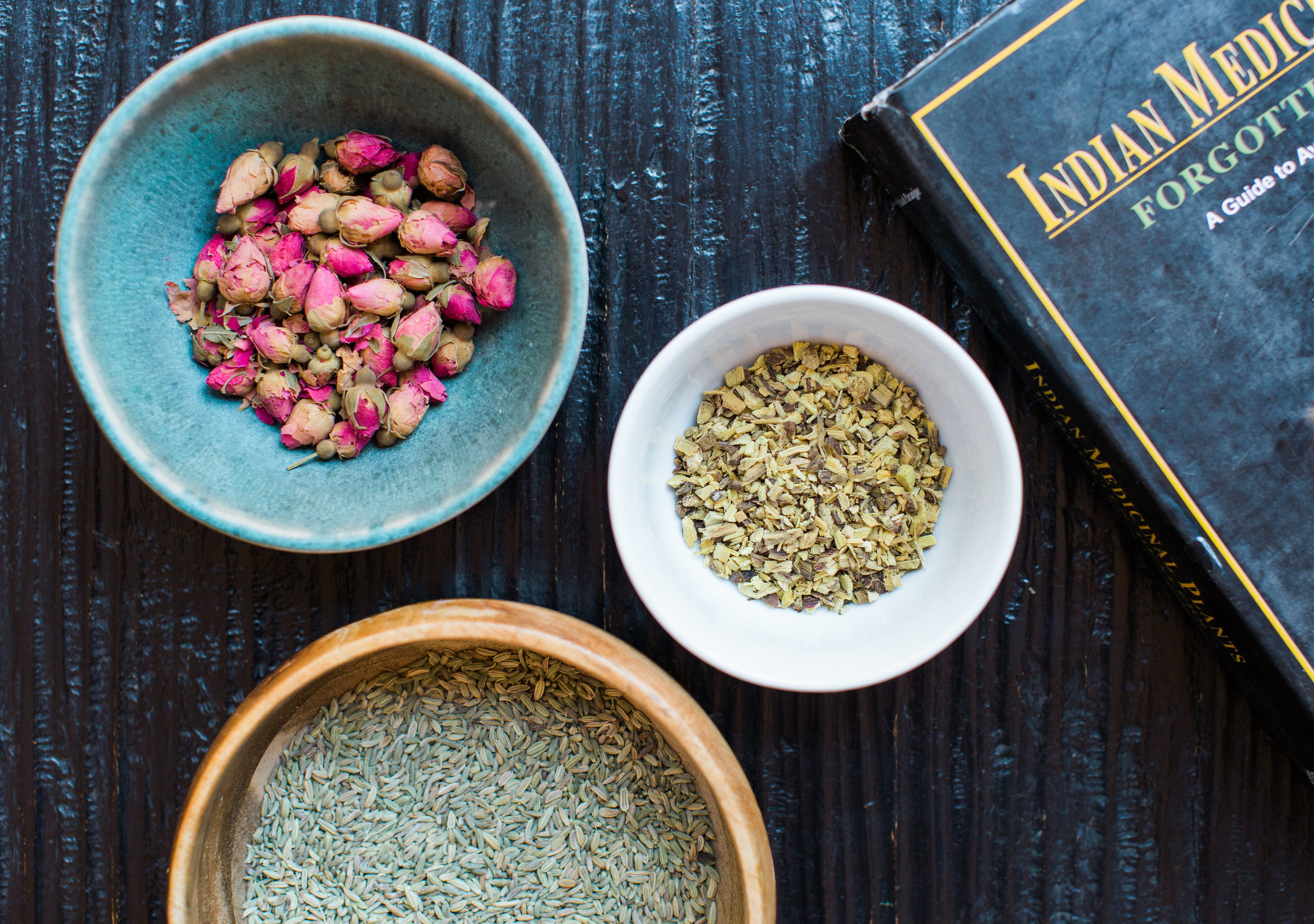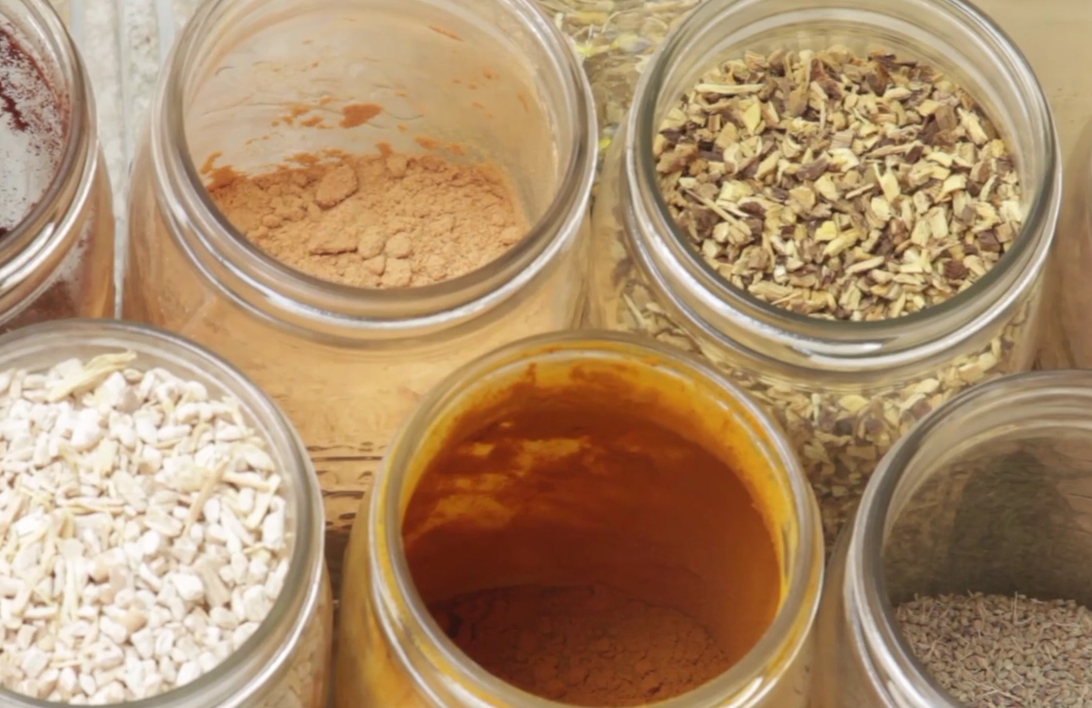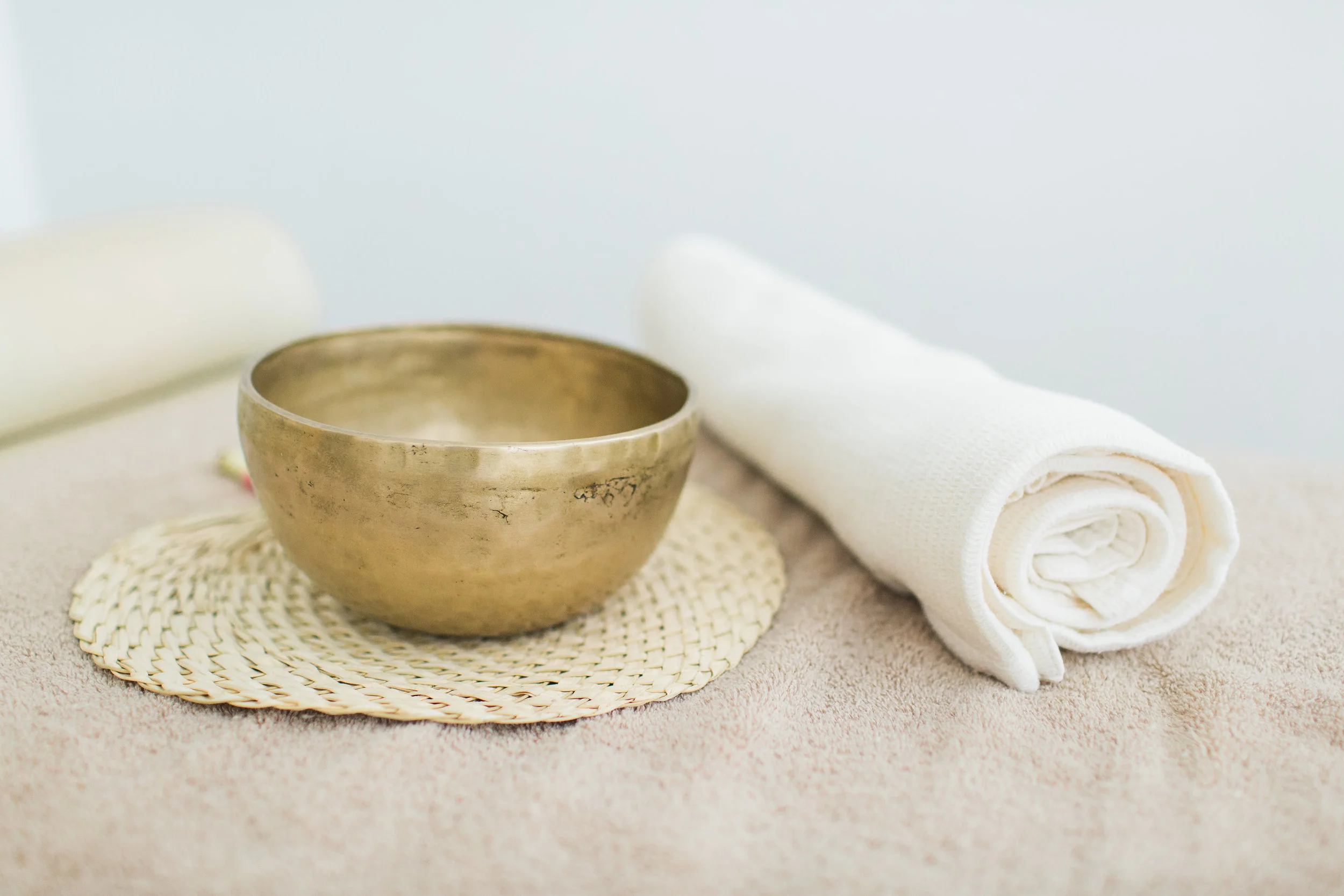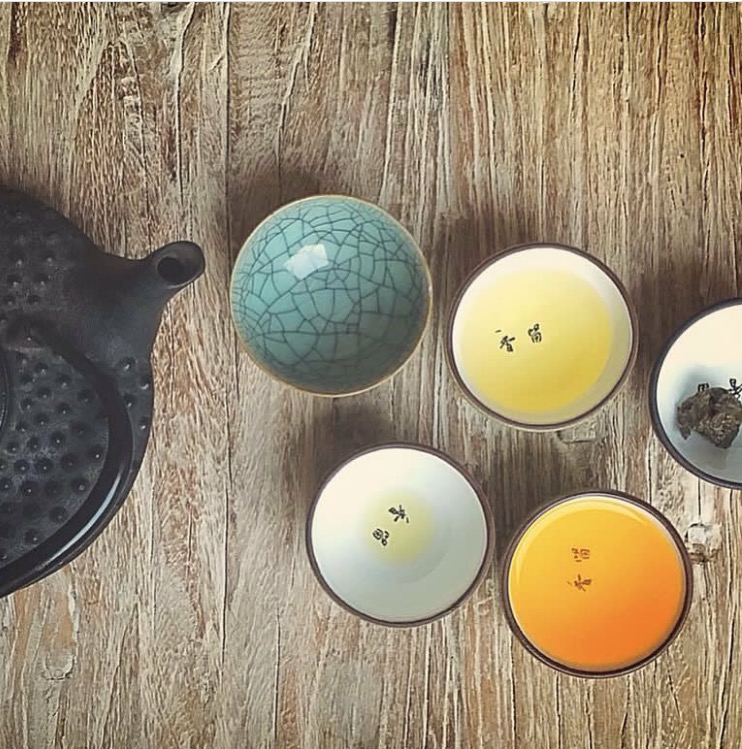In the modern woman of all ages, most women rooted in hormonal imbalances have been brought on by doing too much while getting too little physical and emotional nourishment. Their hormones have been out of balance for an extended period of time whose medical problems range from painful periods, mood swings, fatigue, insomnia, uterine fibroids, hot flashes, and infertility.
According to Astanga Hrdayam, twenty disorders of the female reproductive tract exist, caused by poor flow, defective ovum and ovary, and past karma. This results in an inability to conceive and other health concerns such as tumors, polycystic ovarian syndrome, hemorrhoids, menorrhagia, endometriosis, etc. The intent of this article is to discuss female hormone and reproductive imbalances associated with polycystic ovarian syndrome (PCOS) from the view point of Ayurveda.
Infertility primarily refers to the biological inability of a person to contribute to conception. Infertility may also refer to the state of a woman who is unable to cary pregnancy to full term. For medical treatment, infertility is the failure of a couple to become pregnant after one year of regular, unprotected intercourse. PCOS is a leading factor causing infertility.
Menstruation is evidence of a woman’s fertility and hormonal balance. When the quality and quantity is healthy she has a healthy, moderate flow. As long as she is in balance, she will enjoy regularly timed cycles. When out of balance, she may suffer from painful, heavy, scanty or irregular periods, headaches, skin breakouts, or extreme emotions accompanying her cycle. A woman’s menstrual cycle is a great indicator of her hormonal balance and when it is accompanied by unpleasant symptoms it is an indication of imbalance or disease.
Western medicine emphasizes the separate domains and functions of various kinds of hormones in the body. Ayurveda emphasizes the context within which they exist and how they relate to each other. Having the right balance of hormones gives us plenty of energy, deeper sleep and healthier menstrual cycles, happier dispositions, easier menopauses, healthier hearts, stronger bones and much more.
The first step in achieving hormonal balance is to understand it. Most people are confused about hormones. Estrogen, progesterone, and prolactin are the primary female hormones affecting women’s health. There are also some amounts of testosterone in the body playing a greater role during menopause. Besides these hormones, FSH (Follicular Stimulating Hormone), LH ( Leutinising Hormone) and Gonado Trophic Releasing Hormones are important hormones secreted by the Pituitary gland. While the ovary is capable of forming and releasing both estrogen and progesterone by itself, it is also the reservoir of the ova.
The ovarian cycle is governed by a hormonal feedback system moderated by the hypothalamus thus it requires constant feedback of hormonal levels for it to properly regulate and release the FSH and LH from the pituitary gland. As hormone levels in the body are imbalanced and the ovum is not released by the ovary the positive feedback mechanism is impeded.
However, Ayurveda does not speak in the terms of “hormones”. It has its own unique language and terms. Hormones are considered as fire elements in the tissue. The action of hormones expresses the nature of Pitta, the energy responsible for the transformation. All stages of the female reproductive process are a result of the interplay of hormones. The spark of the intelligence behind the transformation of each stage is due to pitta reflected in the influence of the hormones on the different stages of the ovarian and menstrual cycles.
Kapha’s heavy cool qualities nourish the development of the tissues that form and support the reproductive system including the nurturing energy supporting growth of the follicle during the ovarian cycle. It is responsible for the mucosa lining that protects the tissues from digestive enzymes.
Vata is responsible for the movement of the follicle during the ovarian cycle, the rupture of the ovary wall releasing the matured ovum, the movement of the fimbriae - the finger-like projections that guide the ovum into the fallopian tubes and the movements of the ovum towards the uterus. These actions are due to Apana Vayu, the force behind downward movement from the navel down. Apana Vayu is also responsible for the movement of menses during menstruation and the energy behind the downward movement of the baby through the birth canal during labor.
By knowing one’s own prakruti (true nature), one can plan and practice an appropriate daily and seasonal dietetic and behavioral regime. With this simple effort, the body will maintain a balance of the doshas (Vata, Pitta and Kapha). From an Ayurvedic perspective, this balance is considered the “healthy” state of humans.
Dietary and behavioral activities bring many changes in the rakta dhatu (blood). For example; if a pitta-type woman eats plenty of hot, spicy and acidic foods while indulging in pitta-aggravating activities such as playing in the sun or taking a hot tub bath, getting angry, etc, she will aggravate the pitta in the blood. This can cause excessive bleeding during menstruation or lead to menorrhagia.
As another example; after the age of forty, the body begins to move towards the Vata stage of life and away from the pitta stage of life. During this period, if a Vata-type woman does not sleep well, works until late at night, eats plenty of cold foods and salads and eliminates sweets, salt, and fats from her diet, she will most certainly aggravate Vata in both the blood and the body. This will lead to a more difficult menopausal syndrome. In the same way, when a Kapha-type woman excessively indulges in sweet, rich food, eats plenty of dairy products and nuts, and lives a sedentary lifestyle during peri-menopause, she will be accumulating an excess of Kapha (mucous) in her blood and body which can lead to tumors or depression.
Polycystic ovary syndrome (PCOS) is the most common endocrine disturbance affecting women between 15-30 years of age. The disorder accounts for 30 percent of all infertility cases with 73 percent of women suffering from PCOS experiencing infertility due to anovulation. Modern medicine has been able to pinpoint a number of important factors indicating the disease, however, the exact cause of the disease is unknown. In PCOS the hormonal imbalance affects follicular growth during the ovarian cycle causing the affected follicles to remain in the ovary. The retained follicles forms into a cyst and with each ovarian cycle a new cyst are formed leading to multiple ovarian cysts. Women suffering from PSOC often present with other associated symptoms including excessive body hair, menstrual disturbance, acne vulgaris and obesity. Ayurveda observes the disease looking for indications of the dosha responsible for the disorder.
Ayurveda classifies PCOS as a Kapha disorder, and by looking at the findings of modern medicine we can correlate the exhibiting features of the disease with the dominate dosha responsible for the disorder. One of the key factors being realized in modern medicine in PCOS is the increased levels of insulin in the blood. These increased levels are due to de-sensitivity of cells to insulin, the blood stimulates androgen secretion by the ovarian stroma, the connective tissue of the ovary and reduces serum sex hormone, binding globin (SHBG) causing increased levels of free testosterone. Due to the presence of increased androgen in the ovary, the follicle undergoing maturation in the ovary cycle is affected causing anovulation of the particular follicle. This presence of insulin also impacts the natural occurring death of the defective cell causing the follicle to continue to survive whereas under normal circumstance it would have perished.
“Kapha getting aggravated by the use of foods which increases moisture leads to slaismiki characteristic by the absence of pain, feeling cold, itching and discharge of pale, slimy blood” -Astanga Hrdayam. The organs responsible for reproduction in the female body are called artava dhatu. The channels that supplies, nourishes and enables the functional action of carrying the ovum to the uterus is called artavavaha srota. All three doshas (Vata, Pitta, Kapha) play important and distinctive roles in the processes behind the female reproductions which includes the ovarian cycle and the menstrual cycle. PCOS is due to the Kapha blocking Vata and Pitta, hence movement is obstructed and the transformation process is suppressed.
Kapha having the first affected the digestive fire, jathara agni starts to affect the metabolic aspect of the seven tissues of dhatu agni. Each dhatu agni is responsible for the nourishment and formation of that particular tissue that resides in. In the case of PCOS the dhatus that are affected are rasa dhatu, lymph and plasma, meda dhatu, the adipose tissue and artava dhatu, the female reproductive system.
Due to factors that aggravate Kapha, kledaka kapha residing in the GI tract increases in quantity and as stated affects the digestive fire in the stomach called jathara agni. As the heavy cold sticky qualities of Kapha suppress the digestive fire, food that is ingested is not properly digested forming ama. As kledaka kapha increases it mixes with the toxins and begins to move out of the GI tract entering the channel of the first tissue. Affecting the dhatu agni of the rasa, the metabolism of the lymph and plasma, rasa dhatu increases in quanity. In woman, the superior byproduct of rasa dhatu is menstrual fluid. The menstrual fluid will also take on the quality of kapha which will, in turn, begin to block apana vayu in artavavaha srota and rajahvaha srota, the channel that supports the functional action of the menstrual fluid.
Increased rasa dhatu circulating the body via the circulatory system being mixed with increased kledaka kapha and ama begins to coat the cells of the body, this begins to affect agni at the level of the cells responsible for the permeability of the cell membrane. Due to the sticky heavy qualities of Kapha the cell membrane of the tissues is coated suffocating the agni affecting the cellular intelligence causing insulin receptors on the cell to not recognize chemical structures that normally engage them. Insulin unable to engage cellular receptors begins to build up in the bloodstream moving towards artava dhatu. Kledaka kapha and ama having affected meda dhatu affects artava dhatu angi increasing tissue formation. Ama entering the cells of artava dhatu begins to affect the cellular function and intelligence as seen when insulin engages receptors on the ovaries causing the production of androgens. A mistake of cellular intelligence is also expressed in the inhibiting of apoptosis, the death of defective cells.
Vata is the principle in the body and in nature that moves things. Both Pitta and Kapha are immobile without Vata. If Vata becomes constricted, it in turns stops both Kapha and Pitta from functioning properly. Apana vayu is a function of Vata. Due to the heavy sticky qualities of Kapha and ama the srotas are blocked and apana vayu becomes stagnant, impeding the flow of Vata in the ovarian cycle. Because Vata is blocked, pitta is blocked as well. As pitta is blocked the hormones that carry the energy of transformation are unable to initiate their activities. The accumulated Kapha is expressed in the formation of the cyst in the ovary as it takes on a heavy white, sticky quality expressing Kapha and ama.
Due to Vata and Pitta being blocked in the artava dhatu the other functions of both these doshas begin to be aggravated. Pitta aggravation at the level of bhrajaka Pitta and ranjaka pitta manifests as acne and increased body hair. Menstrual problems manifest to the aggravation of all three doshas but namely apana vayu. “ Without the aggravation of Vata, the vagina does not get disordered in women, hence it should be treated before Pitta and Kapha” - Astanga Hyrdayam.
Allopathy treats the condition on lines of Hormonal imbalance and the major treatment includes HRT ( Hormone replacement therapy) where subsequent hormones are administered after proper evaluation of the patient. Diet and certain exercise are also recommended. Diabetic drugs like metformin may also be prescribed by a doctor and surgery is also an option. However, all this have their own after effects.
Hormone therapy further depletes the already taxed endocrine system and puts it to sleep. The hormones that are meant to be naturally released by the body, now provided with artificial means pushes the body into lazy mode. The HRT treatment may provide excellent results over a short period of time but it can lead to irreversible metabolic damage.
The Ayruvedic approach is to clear the obstruction in the pelvis, normalize metabolism and assist cleansing and regulate the menstrual system (arthava dhatu). We do this by addressing Apana Vayu. The seats of the function of Apana Vayu are testes, bladder, umbilical region, thigh, groin etc. It controls the functions of elimination of semen, urine; feces etc. The movements related to the delivery of fetus are also governed by it. Vata is the dosha that governs Apana Vayu. Vata is responsible for all the movements in the body. Below are a few suggested Ayurvedic protocols to balance Vata and Apana Vayu.
The first step in creating balance in someone with PCOS is addressing the Ama, as we know PCOS is an imbalance related to the Ama created from Kapha. It is important to provide the patient with herbs that are pachana. Ask the patient to take trikatu or any pungent herb, hingwashtak churna with meals to start loosening the sticky ama. Adding ginger, musta and kumari would help with the digestion of the ama.
After the digestive system is stimulated herbs pacifying Vata and supporting Apana Vayu can be given. This may include shatavari, mahashatavari, ashwagandha, arjun, pipli Aloe vera, cinnamon, fenugreek, amalki, honey, and shilajit. Some other useful medicines include arogyavardhini, dashmool preparations, kanchanar guggul, pushyanug choorna, and chandraprabha. The goal of the herbal medicine is to reduce circulating androgens, optimizing ovarian function and supporting optimal endocrine function.
Herbal suggestions:
Suggestion #1- 150 gms ashwagandha roots, 70 gms arjun bark. Divide both of these into 30 equal parts. Boil 1 part every morning in 3 cups of water and reduce to 1 cup. Filter this mixture and add 1 cup of cow’s milk to it. Boil the mixture again over a low until milk remains. Add 2 cardamoms while boiling. Consume this milk early morning empty stomach. A Little sugar can be added for taste. The remaining ashwagandha and Arjun can be used again for the evening dose. During summer months, shatavari can be substituted for ashwagandha.
Suggestion #2- 5gms ashwagandha tubers, 3gms shatavari tubers, 3 gms putrajivak seeds. Crush them in 3 cups of water and 1 cup of cow’s milk. Boil the mixture till milk remains. Filter and drink empty stomach.
Suggestion #3- 50gms pipil, 50gms Vad, 30gms shivlingi seeds. Dry and them into a fine powder. Intake 3 gms of this mixture with cow’s milk 2 times a day.
Panchkarama protocol helps to high degrees to clear many pathologies which cause a direct inhibition to fertility. Basti treatment proves very beneficial. Since Basti is targeted at regulating the Apana Vayu it facilitates the timely release of ovum and also the good production of sperms. Uttar Basti, is helping to strengthen the uterus and help implantation. Purificatory process of Vamana and Virechana also help in patients with a high imbalance of Dosha. Nasya is an important Karma to promote fertility. Nasya with Phalaghritaor simple cow’s ghee is very benficial in women for timely release of an egg, as Nasya is claimed to act directly on the hormonal apparatus. Abhyanga massage with Vata calming oils and Swedana with Vata herbs will also be beneficial.
Diet and lifestyle factors are important when dealing with PCOS. Losing weight is an essential part of the treatment. Weight loss rectifies the hormone imbalances; the serum insulin and sex hormone binding globulin levels in the body go up and the testosterone hormone comes down. Exercise and yoga are aid weight loss, relieves stress and improves blood circulation to the ovary thus naturally curing PCOS. Yoga postures that open and stretch your lower back and hips; arousing your thyroid, pituitary and hypothalamus gland can work.
A diet with at least five servings of fruits and vegetable a day increases the immunity of the body. Since the body has become insulin resistant create a low carbohydrate diet. When eating carbohydrates eat well-cooked whole grains and avoid refined flour, processed foods, and white sugar. Lentils, chickpeas contains phytoestrogens, which reduce estrogen levels. Drink plenty of warm/room temp water and avoid coffee and alcohol. Avoid foods such as soy and meats that or hormone filled. Foods that contain essential fatty acids should be taken, avocado, soaked nuts, and seeds. Make sure food is well cooked and warm and meal times are regular.
Disclaimer
The sole purpose of these articles is to provide information about the tradition of Ayurveda. This information is not intended for use in the diagnosis, treatment, cure or prevention of any disease.





















